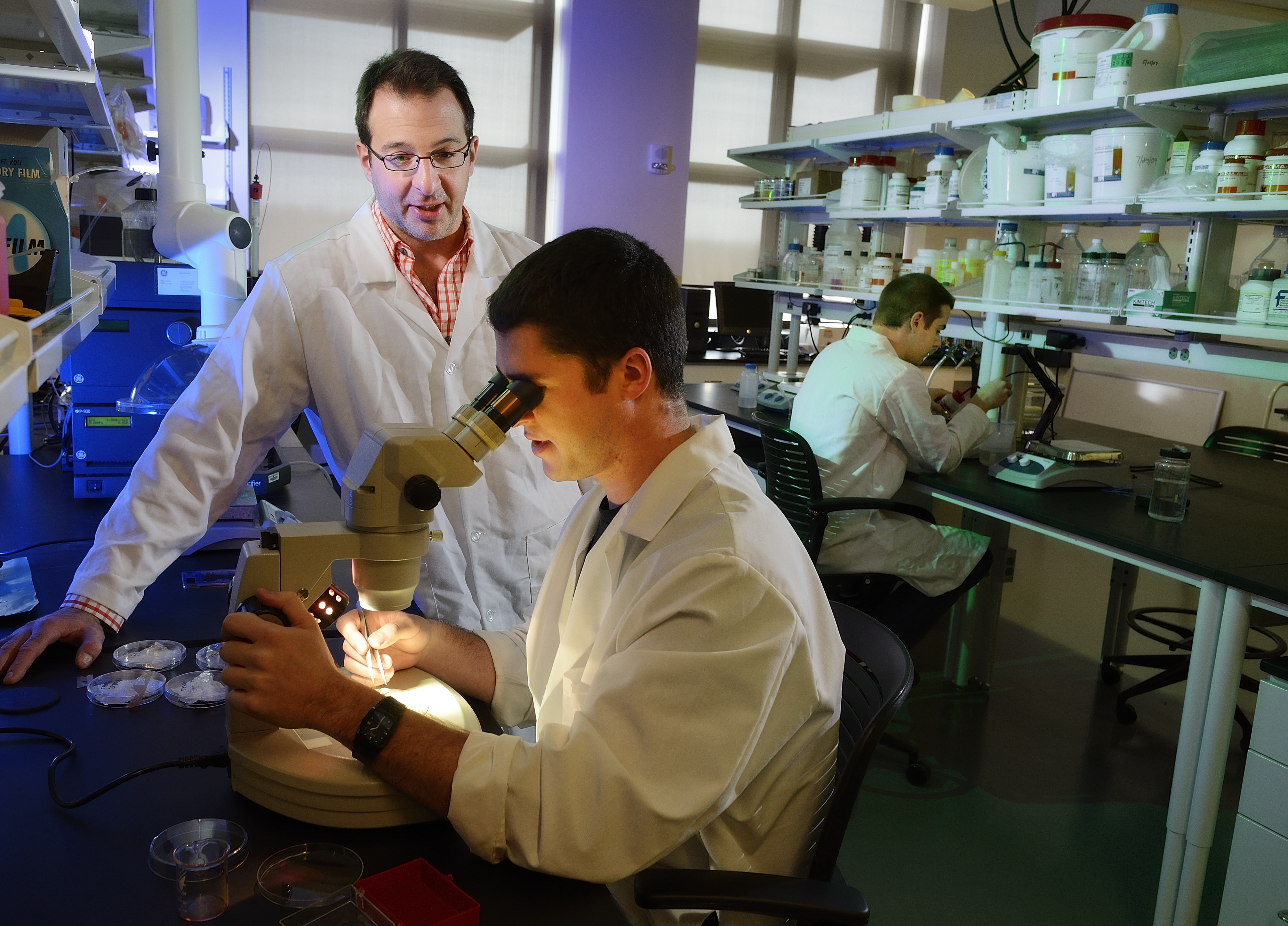Scientist makes fibers in a bottle

Justin Barone may just be a modern day alchemist.
But instead of turning ordinary metals into gold, he makes synthetic fibers that reproduce according to a genetic code embedded in their DNA.
“We live in a world today where we’re not stuck with what nature gave us,” said Barone, an associate professor in the Department of Biological Systems Engineering, which is in both the College of Agriculture and Life Sciences and the College of Engineering. “We decided we could start making our own proteins to create better fibers in the lab.”
Barone’s research seeks to make the fibers replicate and assemble of their own volition depending on the genetic code that is used to create them. His research could potentially be used to create muscle fibers and entire limbs in the future.
Knowing the genetic recipe of a fiber allows Barone to control the shape of the fiber and how much the proteins should interact with each other. By programming the proteins to interact with each other more, it’s possible to make a fiber tougher and stronger. If proteins are programmed to interact less, they are more pliable.
Barone’s lab is located in the new Human and Agricultural Biosciences Building 1, an airy building, with brand new laboratory facilities, natural lighting, and a large, open atrium entrance.
“You are inspired right as soon as you walk inside,” he said.
The larger lab space will help garner interest from industry for Barone’s other research endeavors that use keratin products like chicken feathers, animal hooves, and corn and soybeans to make biodegradable plastics.
“You have to show that you can do something in a lab on a large scale to get people interested," said Barone. “It’s hard to show someone something in a beaker. We finally have the space we need to bring someone into a lab and show them we are processing large amounts of biomass — such, 10,000 pounds of corn an hour — and really show them how it works.”
Barone likes using chicken feathers and other keratin-based fibers because they are tough and versatile, and an agricultural waste product. His use of these products also directly benefits the agriculture industry in the state because the products either end up in landfills or in low cost animal feed, so his research could potentially create another revenue stream for farmers.
Who knows? If Barone’s research with chicken feathers becomes widely used, he actually may be somewhat of an alchemist for Virginia farmers by spinning feathers into cash.



